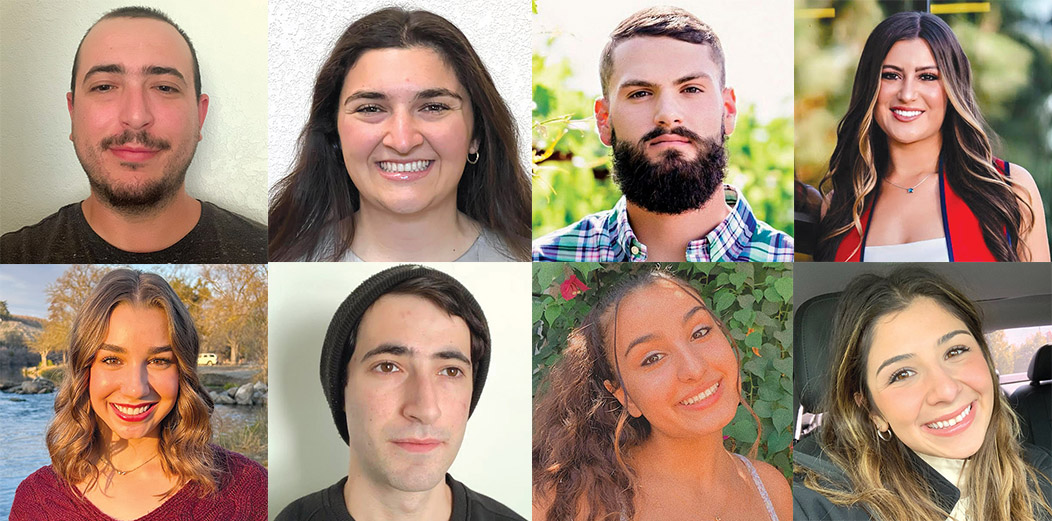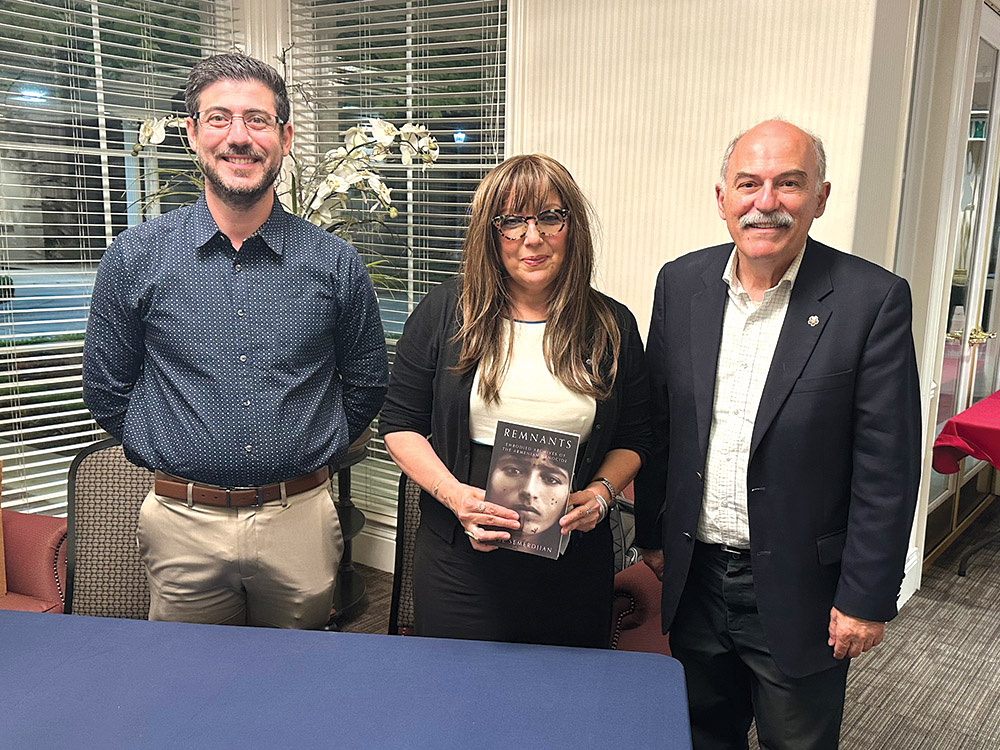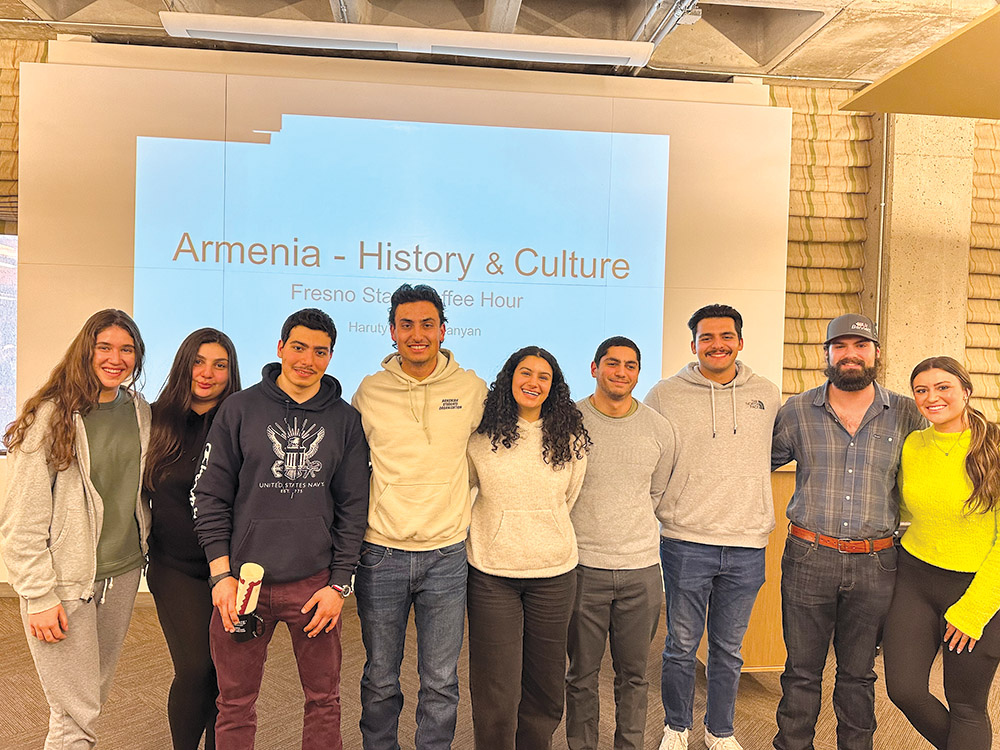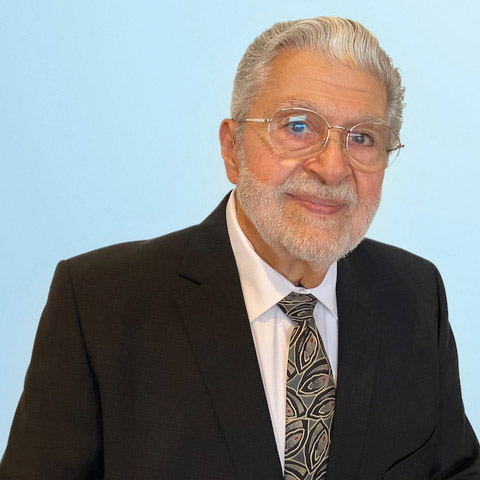“My imagination has ingested only a filament of a huge event.”
Peter Balakian, author and poet of eight books, visited the Fresno State campus on Monday, April 22 to address what Dr. Sergio La Porta introduced as a “continuation of a conversation through poetry.” Balakian’s lecture, titled “Imagining the Past: Atrocity, Trauma, and the Armenian Genocide,” reflected on how the tragedies of a historic past can leave remnants of “post-memory” on continuing generations, and more so, how that theme can be expressed and communicated through the art of literature.
Balakian’s presentation was organized by the Armenian Studies Program at Fresno State and was co-sponsored by the College of Arts and Humanities.
As the Donald M. and Constance H. Rebar Professor of the Humanities and Professor of English at Colgate University, Balakian’s “prodigious and meaningful” words bridged the idea of the past and present through literary works regarding his family’s personal experience in the Armenian Genocide of 1915.
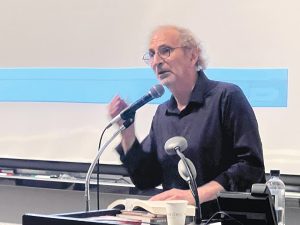
“It was the first time Genocide was committed by a government with modern technology… with the purpose of eliminating an ethnic group,” he recalled. “Imposing lies about genocide” is what contributes to its continued denial, generational trauma, and indisputable scandal that has become a study in it of itself.
Following his personal reflections, Balakian utilized a short photo presentation to communicate the atrocities of the Armenian Genocide over a different medium of art. He showed a detailed map of the massacres and deportations, the faculty of Anatolia College being marched out of Kharpert, deportees walking, concentration camps, and starving women and children.
He noted that Ottoman perpetrators targeted the “heads of the culture,” attempting to eradicate the contributors, educators, and elite to conduct the Ottoman attempts at Pan-Turkism and ethnic cleansing.
Two hundred and fifty cultural leaders were arrested in Constantinople on April 24, the event that resulted in the designated day of commemoration of the Armenian Genocide. Some notable arrested figures included Krikor Zohrab, Adom Yarjanian, Daniel Varoujan, and Komitas. This reported arrest occurred at least “ten times over,” and resulted in the death of eighty-two Armenian writers.
Balakian uses his ancestor’s stories to “construct his voice,” harmonizing rhythm, images, and metaphors to convey his poetic tales, as he believes that “a subject by itself is just raw data.” Influenced by modernists like William Butler Yeats and Sylvia Plath in his early writing career, Balakian began using “history as a force for his literal imagination.” After discovering the stories of his grandmother’s experience in the death marches during the Armenian Genocide, Balakian began “probing” the Anatolian world in his works, using realistic and euphoric poetry to develop solidarity in the “haunting” past of his ancestors.
Themes of “post-memory” and the desire to understand one’s roots drove Balakian’s memoir, Black Dog of Fate. Balakian read a chapter titled “The Woman in Blue,” which followed his close relationship with his grandmother, a Genocide survivor. Following the “dreamlike” descriptions of his grandmother, Balakian finished with a few of his meditational poems including: “Eggplant,” “Pomegranate,” “History Bitterness,” and “Coming to Istanbul.”
Whether inspired by natural elements, personal experiences, or taboo tales, Balakian searches for the “deeper truth” in all of his works, using metaphors to paint the imagery of his culture, paying homage to his people, and preserving the legacy of the Armenians through tangible arts.





